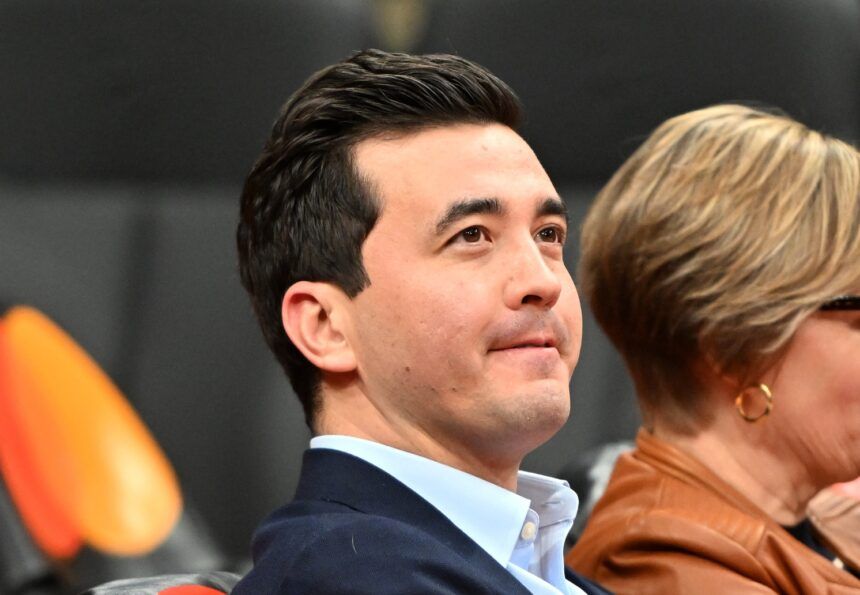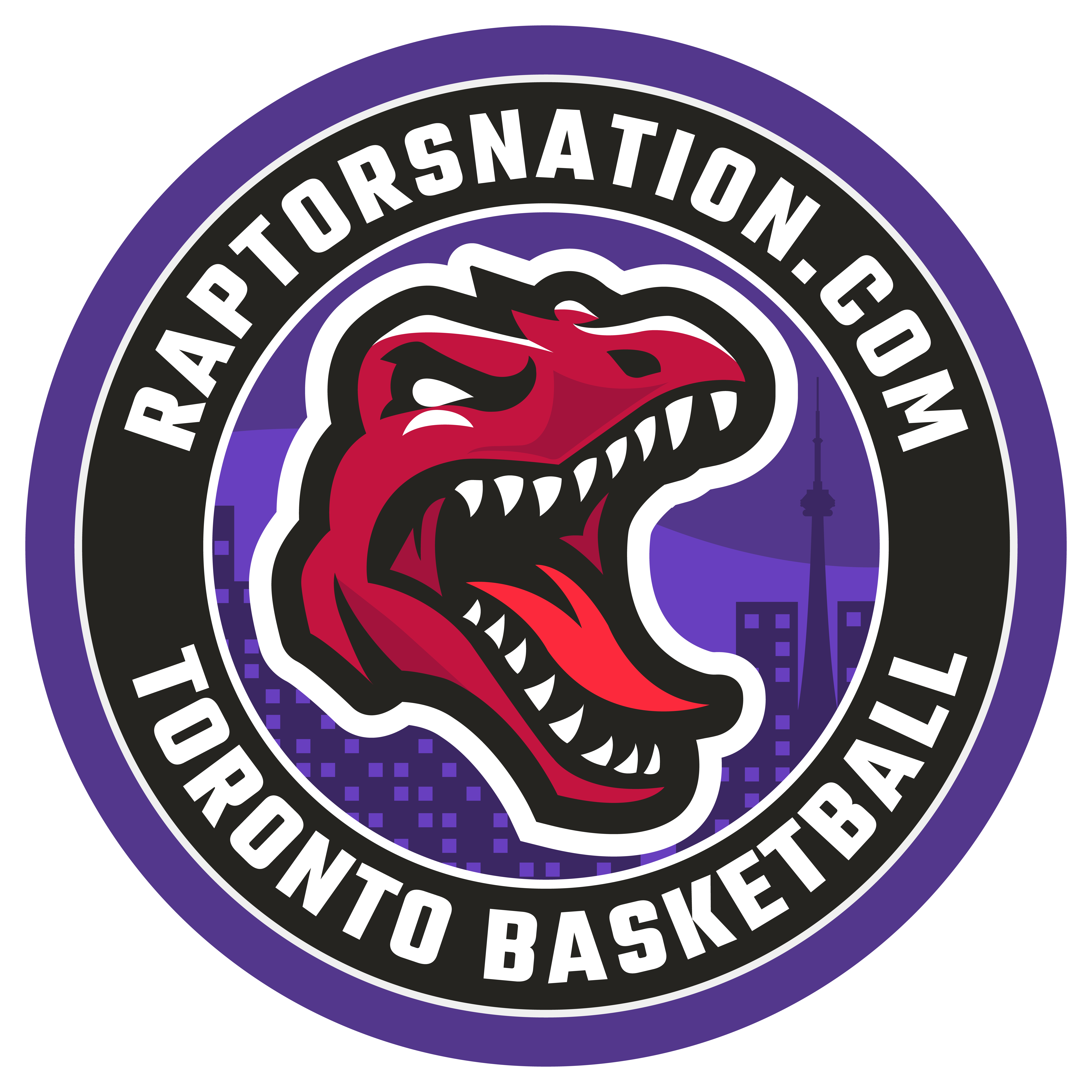The Toronto Raptors are undergoing a significant transformation. They intend to balance ambition with pragmatism as they pivot into a crucial rebuilding phase. Following a period of uncertainty, highlighted by the departure of longtime President Masai Ujiri and a lackluster on-court performance, the franchise is betting on internal continuity and targeted investments to reshape its identity.
Now led by General Manager Bobby Webster, the front office navigates a challenging path forward amid financial commitments, strategic roster moves, and leadership transitions.
Every move carries heightened significance as the team prepares for the 2025–26 season. This article explores how the Raptors are retooling their roster, managing cap space, and leveraging youth development to reset their competitive trajectory in the Eastern Conference.
Bobby Webster Guides the Post-Ujiri Transition
With Masai Ujiri stepping down, Bobby Webster steps into the spotlight’s full glare. As the franchise’s appointed general manager in 2017, Webster has long been its strategic backbone, co-piloting alongside Ujiri during the team’s title run.
His recent contract extension underscores organizational faith in his leadership. Maple Leaf Sports & Entertainment (MLSE) has emphasized continuity, ensuring the transition doesn’t destabilize team operations.
Webster’s knowledge of the Raptors’ internal dynamics provides a steadying presence during a volatile period. The search for Ujiri’s successor is underway, but in the meantime, the Raptors are doubling down on Webster’s experience to shepherd the team into its next chapter. His mission is to blend stability with bold, forward-facing decisions that reflect legacy and evolution.
Poeltl’s Extension Signals Trust – but Carries Risk
Jakob Poeltl’s new four-year, $104 million contract has sparked debate across league circles. Since being reacquired at the 2023 trade deadline (costing the Raptors a pick that became No. 8 in 2024), Poeltl has provided value as an anchor in the paint.
His adjusted plus-minus impact, 2.2 points per 100 possessions above average, ranking in the 89th percentile, reflects a solid contribution. Yet his rim protection metrics have declined, with opponents converting over 60% of attempts in the restricted area during his tenure.
The deal locks in Poeltl until he turns 34, raising questions about the aging curve and market demand. While technically sound, the extension reflects a gamble: Poeltl remains productive deep into his 30s, even as few other teams were poised to outbid his services.
As with many mid-tier signings, such moves rarely dramatically shift NBA team odds, but they do shape the perception of organizational direction.
Depth Moves Highlight Strategic Experimentation
In contrast to Poeltl’s high-cost deal, the Raptors’ signing of Sandro Mamukelashvili offers a low-risk, high-upside play.
On a two-year, $5.5 million contract, Mamukelashvili brings intriguing bench value. His per-36-minute scoring average with San Antonio (20.4 points), paired with 37% three-point shooting on 161 attempts, suggests offensive versatility. A standout 34-point game against New York showcased his scoring ceiling.
While not a defensive stalwart, his fit alongside players like Jonathan Mogbo or Collin Murray-Boyles could cover gaps. This signing also signals a shift toward versatile frontcourt experimentation, one that’s cost-effective and development-friendly. The Raptors are willing to try unconventional rotations to identify long-term assets without significant financial risk.
Waiving Rhoden Opens the Door for Youth Development
The decision to waive Jared Rhoden, who recently underwent shoulder surgery, created a two-way contract opening just as the Summer League approaches. Rhoden had shown promise, including a 25-point, 12-rebound performance against Philadelphia, but his recovery timeline (4–6 months) made him a short-term roster liability. In his place, second-round pick Alijah Martin becomes a leading candidate to step into that slot.
Whether Martin earns a two-way deal or a standard contract remains undecided, but the Raptors now have the flexibility to prioritize player readiness and role fit.
This roster churn underscores a growing focus on development. It’s not just about filling spots; it’s about allowing the right emerging talents to shine in real-game conditions.
Cap Strategy: Balancing Commitment With Opportunity
Toronto’s long-term financial strategy hinges on calculated contract structuring. Four projected starters are already under contract for a combined $145 million in 2027–28, limiting flexibility. While Brandon Ingram, acquired at the 2025 trade deadline, has yet to debut, he represents a marquee addition that could shift team dynamics.
The organization’s decision to front-load extensions like Poeltl’s while taking budget fliers on role players like Mamukelashvili shows a layered approach. It’s about securing a reliable core while leaving room to pivot. Still, this model assumes that the current core can at least compete for playoff relevance, and that’s a risky bet.
If that calculation fails, the Raptors may face a challenging reallocation process in future offseasons.
Internal Culture and Leadership Will Shape the Next Era
Behind the stat sheets and contract terms lies a more subtle, crucial element: team culture. Bobby Webster’s leadership has emphasized consistency in vision and values, even as on-court results waver. The Raptors are betting that internal cohesion, built over years of collaboration and trust, can be a competitive advantage during transition.
This emphasis on culture is not just about camaraderie; it’s a strategic asset. As the franchise searches for Ujiri’s replacement, the front office aims to preserve institutional memory while welcoming innovation. Stability may not generate headlines, but it can provide a critical foundation in a league defined by volatility. The Raptors are striving to evolve without losing the essence of what once made them champions.
The Year Ahead Will Define the Raptors’ Next Identity
Analysts agree that this coming season is more than an opportunity to rebuild; it’s a referendum on the Raptors’ direction. The decisions made now, from contract gambles to development pathways, will affect the team for years.
Bobby Webster’s steady hand offers reassurance, but the true test lies in results. Fans (and betters) are eager to see if the Raptors’ Brains trust can successfully plot a new course.
For a franchise that once reached basketball’s summit, the climb back begins not with big splashes but precise, patient execution. The Raptors aren’t just rebuilding, they’re reimagining what kind of team they want to be.



